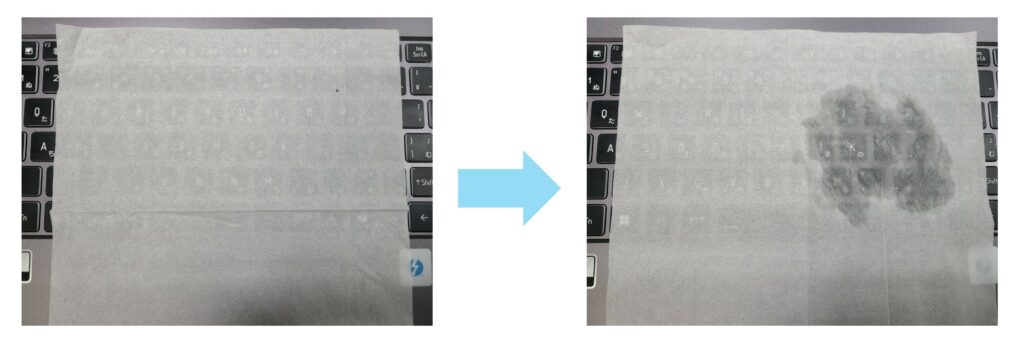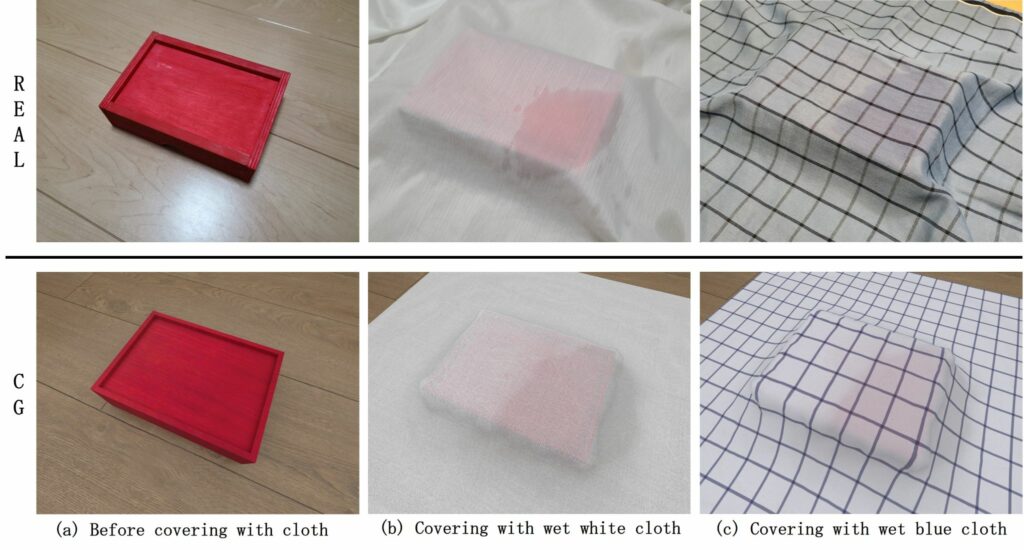Summary
Cloth is observed in many aspects of everyday life, such as clothing, handkerchiefs, and carpets. In the real world, wet weather and liquids often cause cloth to get wet, and thin cloth such as shirts and blouses are known to become more translucency when wet.

The increase in the translucency of a wet cloth.
Thus, the representation of wet cloth in computer graphics has been gaining importance, and various visual simulation methods for cloth have been proposed accordingly. However, most studies have been considered either the translucency of cloth or the interaction between cloth and liquid, whereas few studies have considered wet cloth with translucency.
This study, therefore, proposes a unique visual simulation model called a Stochastic model for WEt Absorbent cloth Translucency (SWEAT), based on cloth’s thickness, yarn density and moisture content of the actual cloth. By combining the parameters of the composite BSDF with the measured values of the cloth, a highly scalable model that can easily represent a realistic wet cloth is realized.

The upper image is a realistic image and the lower one is a visual simulation result using SWEAT. The realistic translucency of the wet cloth can be expressed in accordance with the thickness and moisture content of the actual cloth.
Members
| Name | Affiliation | Web site |
|---|---|---|
| Keio University |
Publications
Presentation
Refereed
- Yuki Nakamura,Issei Fujishiro:”SWEAT: A visual simulation model of wet cloth with translucency”,in Proceedings of Visual Computing 2025, pp. 6:1-6:6, Waseda University, Tokyo, September 8-10, 2025 (in Japanese).
Unrefereed
- Yuki Nakamura,Issei Fujishiro:”SWEAT: A visual simulation model of wet cloth with translucency”,in Proceedings of Expressive Japan 2025 (The Institute of Image Information and Television Engineers Technical Report, Vol. 49, No. 10, pp.53-56, AIT2025-54), Tokyo Polytechnic University, March 10, 2025, Excellent presentation awards (in Japanese).
- Yuki Nakamura, Issei Fujishiro: “Visual simulation of wet cloth transparency,” in Proceedings of the 87th National Convention of International Processing Society of Japan, Vol. 2, pp. 477―478 (5S-06), The University of Ritsumeikan, March 14, 2025, Student encouragement awards (in Japanese).
Grants
 Grant-in-Aid for Scientific Research (A): 21H04916 (2021-)
Grant-in-Aid for Scientific Research (A): 21H04916 (2021-)